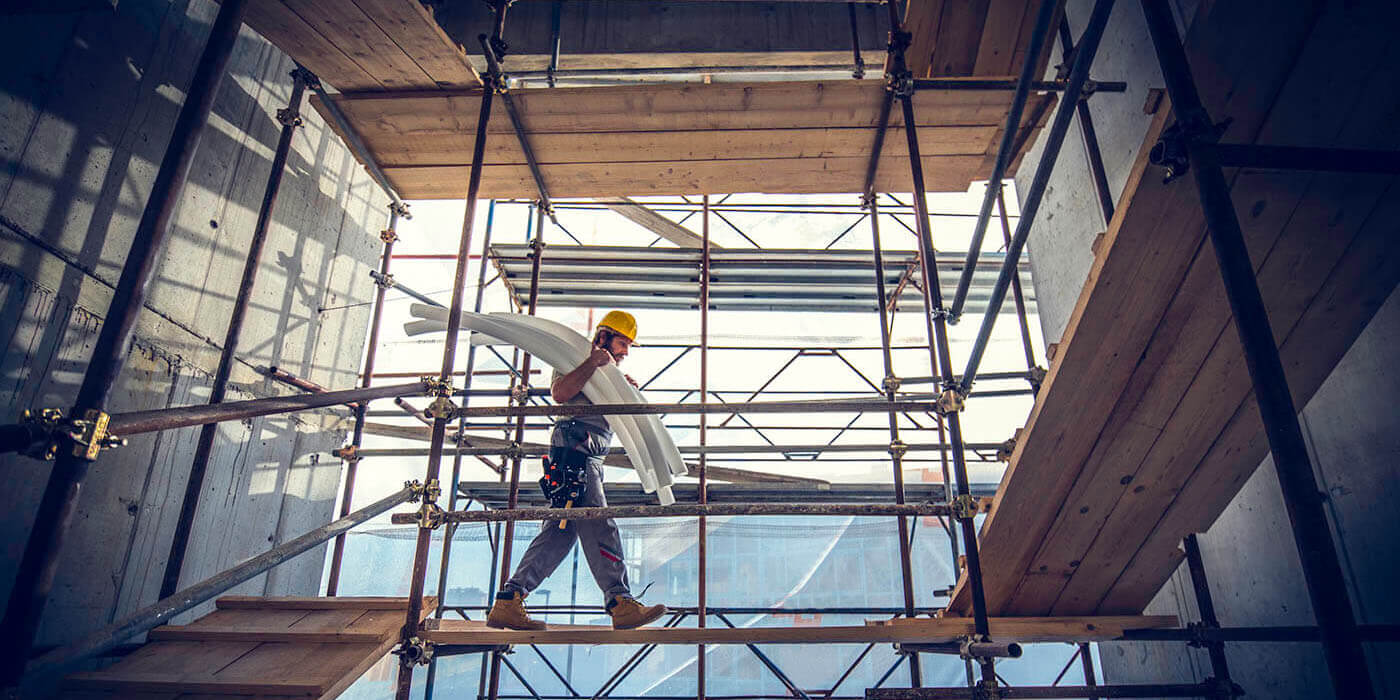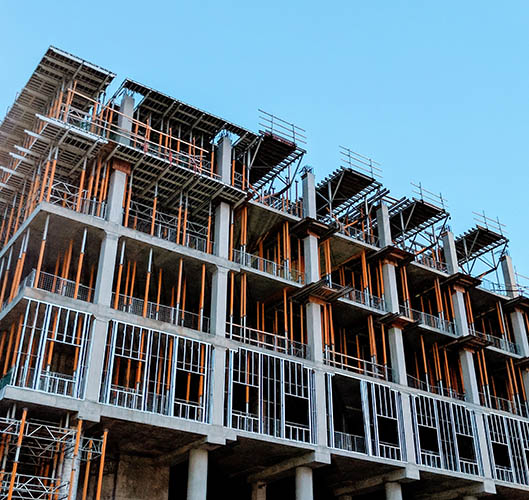Free Case Evaluation
Fill Out The Form Below To Find Out If You Have A Case.
Thank you for contacting us. One of our colleagues will get back to you shortly.

New York City is a global business hub — which means its skyline is teeming with scaffolds and skyscrapers. The city has also experienced a major construction boom in recent years.
While that’s great news for the local economy, this high level of construction has also resulted in elevated numbers of construction site injuries. Many of these injuries are serious, and have lifetime financial, physical and mental consequences for those affected.
One of the most common forms of construction-related injury involves scaffolding. If you or a loved one has been injured as the result of a scaffolding injury, it’s imperative that you understand your rights, and know what to do next.
Scaffolding Injuries by the Numbers
According to the most recent statistics from the federal Bureau of Labor and Statistics (BLS), roughly 50 to 60 people on average die annually in the U.S. from scaffolding-related injuries. Additionally, thousands more are seriously injured.
According to a BLS study, the most common reasons why scaffolding injuries occur are:
- Planking or support failure
- Slips or falls
- Impact from falling objects
The Organizational Health and Safety Administration (OSHA) has detailed rules and regulations that govern the use of scaffolding in commercial settings. These rules may vary according to the setting in which scaffolding is used (general industry, shipyards, terminals etc.)
The construction industry is governed by an extensive set of rules and regulations that set standards and identify hazards associated with scaffolding.
It’s estimated by OSHA that roughly 2.3 million workers (roughly 65-percent of the construction industry) work on scaffolds. Given this number, it’s not surprising that faulty scaffolding (or poor maintenance or operational practices involving scaffolding) are responsible for so many construction injuries.
In addition to avoidable deaths and injuries, OSHA estimates that poor scaffolding practices cost U.S. employers roughly $90 million each year.
Common Types of Scaffolding
Scaffolding is a critical part of the construction process and has been around since the birth of the industry. Scaffolding is used to allow worker access to areas of elevated height. It can also be used to support bricks, blocks and other building material loads.
There are a wide variety of scaffolding types used at modern work sites. Some of the most common forms of scaffolding include:
- Modular or systematic scaffolding. This type of scaffolding is comprised of interlocking vertical and horizontal bars that connect in a systematic fashion. Modular scaffolding is perhaps the most widely-used form of scaffolding globally. It is typically made from steel and can support very heavy loads.
- Tubular Scaffolding. Tube and clamp is one of the older forms of scaffolding. It uses a two-piece setup structure (tubes are connected with clamps) that allows for easy construction of scaffolding structures. Failing to use toe boards and rails is one of the most common causes of tubular scaffolding failure. Additionally, proper setting and locking of all components is essential for avoiding injury.
- Rolling scaffolds. Often used for smaller construction jobs, rolling scaffolds must always be secured when in use through the application of wheel locks or caster brakes.
- Wood or bamboo scaffolds. Commonly used throughout Europe and Asia (but sometimes used in North America as well), this form of scaffolding was the most prominent type before the introduction of steel. When using this type of scaffolding it is vitally important that all wood be of good quality and free from defects.
- Pole scaffolds. This form of scaffolding is sometimes used by so-called “light trades” such as carpentry and painting. Unlike other systems, single pole scaffolds will have only one side supported by uprights.
General Scaffolding Safety Rules
In order to help ensure safe operation, it’s important to follow basic scaffold safety protocols. In order to protect workers, OSHA has issued detailed guidance on the safe operation of scaffolding structures. Some of the guidelines issued by OSHA include:
- The use of guard rails or a fall arrest system for any worker who is stationed more than 10 feet above the ground.
- The use of cross-bracing and mid-rails at specific points.
- Footings must always be level and secure.
- Scaffolds must support at least four times the intended maximum load.
- Supporting platforms must be fully planked and decked at all times.
- Employers must train each employee on safety hazards and the measures needed to control such hazards.
- Scaffolds must be inspected prior to each work shift and after any event that could compromise the structural integrity of the scaffold. These inspections must involve a person who is a competent in scaffold safety.
- A person competent in scaffold safety must oversee the erection and dismantling of all scaffolding structures, to ensure that these processes are completed in a safe manner.
OSHA defines a “competent person” as “one who is capable of identifying existing and predictable hazards in the surroundings or working conditions, which are unsanitary, hazardous to employees, and who has authorization to take prompt corrective measures to eliminate them.”
What to Do in the Event of a Scaffolding Injury
Injuries that involve construction often have grave, lifetime consequences. This means that it’s critical to understand the steps to take if you or a loved one is injured in a scaffolding incident.
If possible, document any worksite hazards or negligence that may have contributed to your injury. Photos, videos and written documentation can help in the process of determining liability.
It’s also important to speak to any witnesses who may have seen the incident, as their corroboration may also help assign liability.
Those with scaffolding injuries should also closely track medical bills, lost wages, transportation costs and other financial losses associated with the injury.
Finally, it’s also important to speak with an experienced legal advocate who understands the complexities of litigation related to scaffolding injuries. Receiving compensation for a scaffolding injury isn’t simple or straightforward; Worker’s compensation rules may apply and knowledgeable analysis to determine those who may be legally liable for injuries sustained is essential to vindicating the legal rights of the injured party.
Ultimately, if you or a loved one has been seriously injured in a scaffolding accident, it’s imperative that you find a New York scaffolding injury attorney with the knowledge required to help ensure fair and just compensation.

Verdicts & Settlements
- $8 Million for Pedestrian Knockdown Case
- $3 Million for Lead Poisoning Case
- $3 Million for Pedestrian Knockdown Case
- 2.6 Million for Lead Poisoning Case
- 2.2 Million for Lead Poisoning Case
- 2 Million for Lead Poisoning Case
- 1.875 Million for Defective Product Case
- 1.5 Million for Lead Poisoning Case
CLIENT TESTIMONIAL
Frankel Law Firm was extremely professional. They were very helpful with every step of the process, always reachable to answer questions and give excellent advice. They were a pleasure to work with!